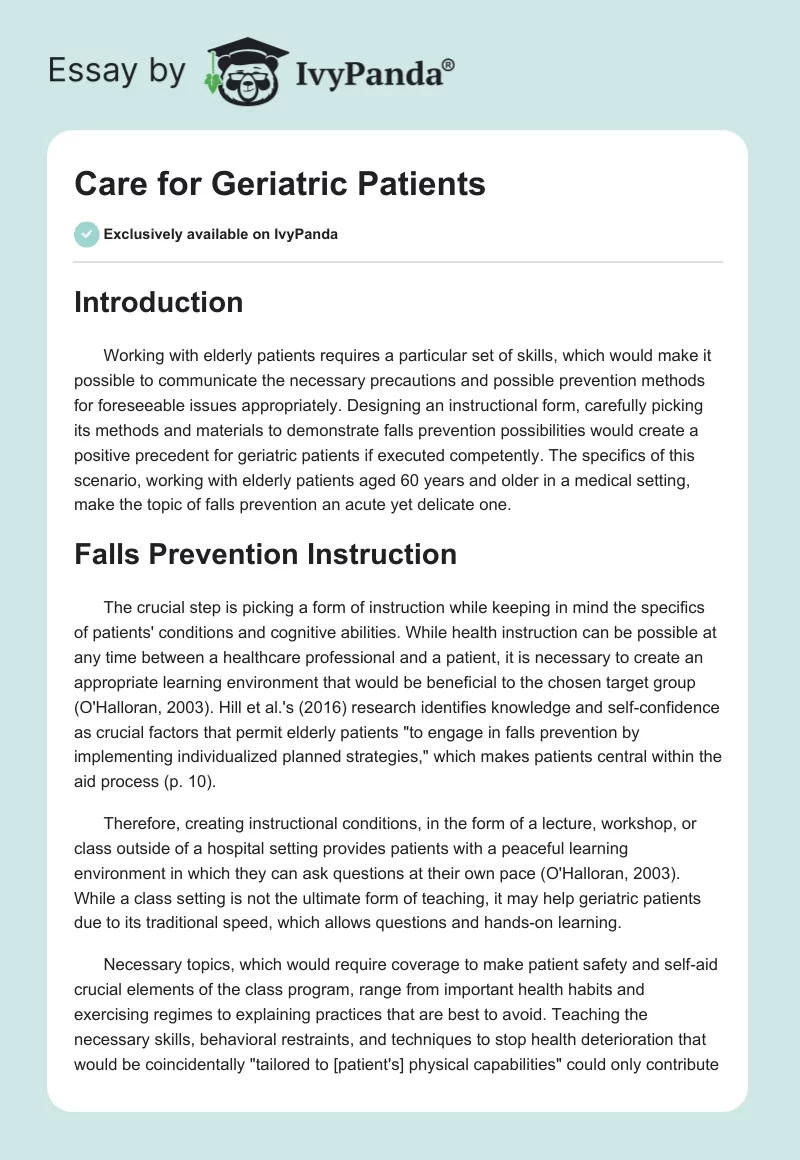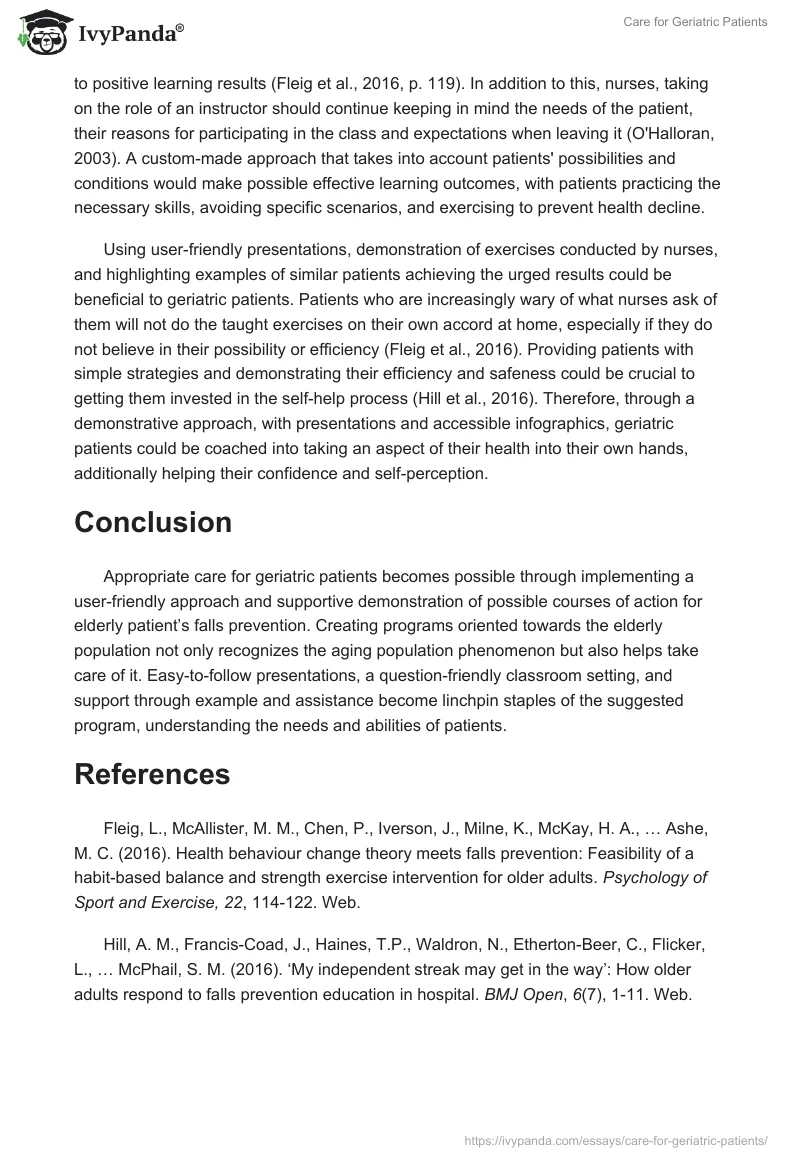Introduction
Working with elderly patients requires a particular set of skills, which would make it possible to communicate the necessary precautions and possible prevention methods for foreseeable issues appropriately. Designing an instructional form, carefully picking its methods and materials to demonstrate falls prevention possibilities would create a positive precedent for geriatric patients if executed competently. The specifics of this scenario, working with elderly patients aged 60 years and older in a medical setting, make the topic of falls prevention an acute yet delicate one.
Falls Prevention Instruction
The crucial step is picking a form of instruction while keeping in mind the specifics of patients’ conditions and cognitive abilities. While health instruction can be possible at any time between a healthcare professional and a patient, it is necessary to create an appropriate learning environment that would be beneficial to the chosen target group (O’Halloran, 2003). Hill et al.’s (2016) research identifies knowledge and self-confidence as crucial factors that permit elderly patients “to engage in falls prevention by implementing individualized planned strategies,” which makes patients central within the aid process (p. 10).
Therefore, creating instructional conditions, in the form of a lecture, workshop, or class outside of a hospital setting provides patients with a peaceful learning environment in which they can ask questions at their own pace (O’Halloran, 2003). While a class setting is not the ultimate form of teaching, it may help geriatric patients due to its traditional speed, which allows questions and hands-on learning.
Necessary topics, which would require coverage to make patient safety and self-aid crucial elements of the class program, range from important health habits and exercising regimes to explaining practices that are best to avoid. Teaching the necessary skills, behavioral restraints, and techniques to stop health deterioration that would be coincidentally “tailored to [patient’s] physical capabilities” could only contribute to positive learning results (Fleig et al., 2016, p. 119). In addition to this, nurses, taking on the role of an instructor should continue keeping in mind the needs of the patient, their reasons for participating in the class and expectations when leaving it (O’Halloran, 2003). A custom-made approach that takes into account patients’ possibilities and conditions would make possible effective learning outcomes, with patients practicing the necessary skills, avoiding specific scenarios, and exercising to prevent health decline.
Using user-friendly presentations, demonstration of exercises conducted by nurses, and highlighting examples of similar patients achieving the urged results could be beneficial to geriatric patients. Patients who are increasingly wary of what nurses ask of them will not do the taught exercises on their own accord at home, especially if they do not believe in their possibility or efficiency (Fleig et al., 2016). Providing patients with simple strategies and demonstrating their efficiency and safeness could be crucial to getting them invested in the self-help process (Hill et al., 2016). Therefore, through a demonstrative approach, with presentations and accessible infographics, geriatric patients could be coached into taking an aspect of their health into their own hands, additionally helping their confidence and self-perception.
Conclusion
Appropriate care for geriatric patients becomes possible through implementing a user-friendly approach and supportive demonstration of possible courses of action for elderly patient’s falls prevention. Creating programs oriented towards the elderly population not only recognizes the aging population phenomenon but also helps take care of it. Easy-to-follow presentations, a question-friendly classroom setting, and support through example and assistance become linchpin staples of the suggested program, understanding the needs and abilities of patients.
References
Fleig, L., McAllister, M. M., Chen, P., Iverson, J., Milne, K., McKay, H. A., … Ashe, M. C. (2016). Health behaviour change theory meets falls prevention: Feasibility of a habit-based balance and strength exercise intervention for older adults. Psychology of Sport and Exercise, 22, 114-122. Web.
Hill, A. M., Francis-Coad, J., Haines, T.P., Waldron, N., Etherton-Beer, C., Flicker, L., … McPhail, S. M. (2016). ‘My independent streak may get in the way’: How older adults respond to falls prevention education in hospital. BMJ Open, 6(7), 1-11. Web.
O’Halloran, V. E. (2003). Instructional settings. In S. B. Bastable (Ed.), Nurse as educator: Principles of teaching and learning for nursing practice (2nd ed.) (pp. 465-492). Boston, MA: Jones and Bartlett Publishers.


